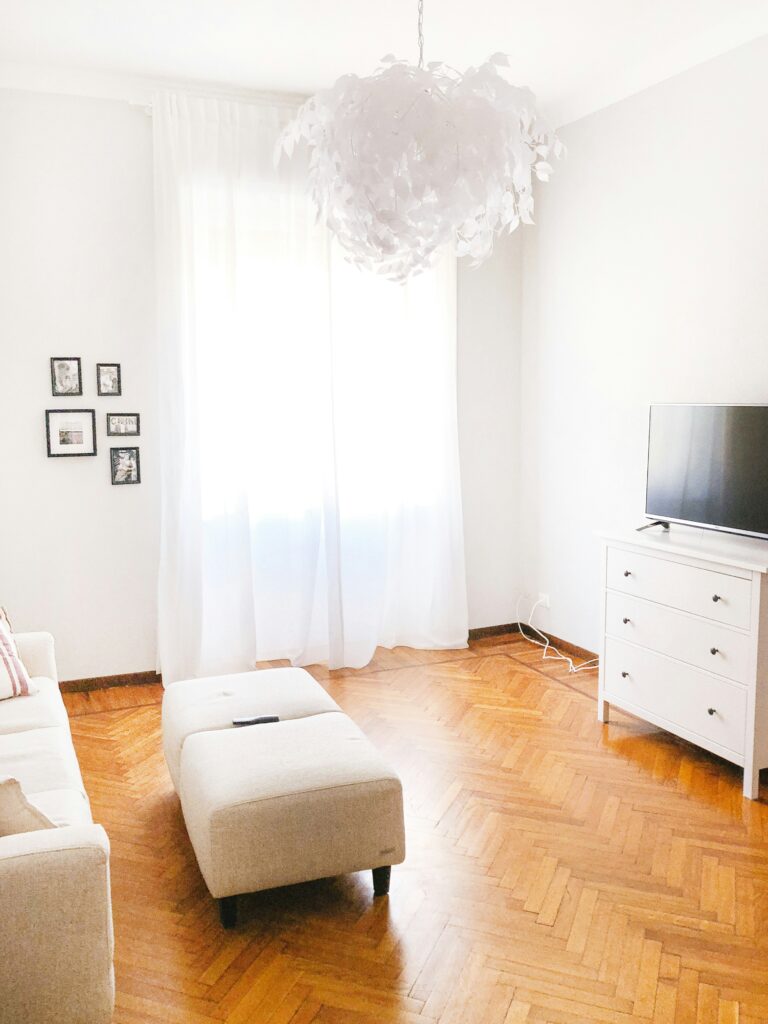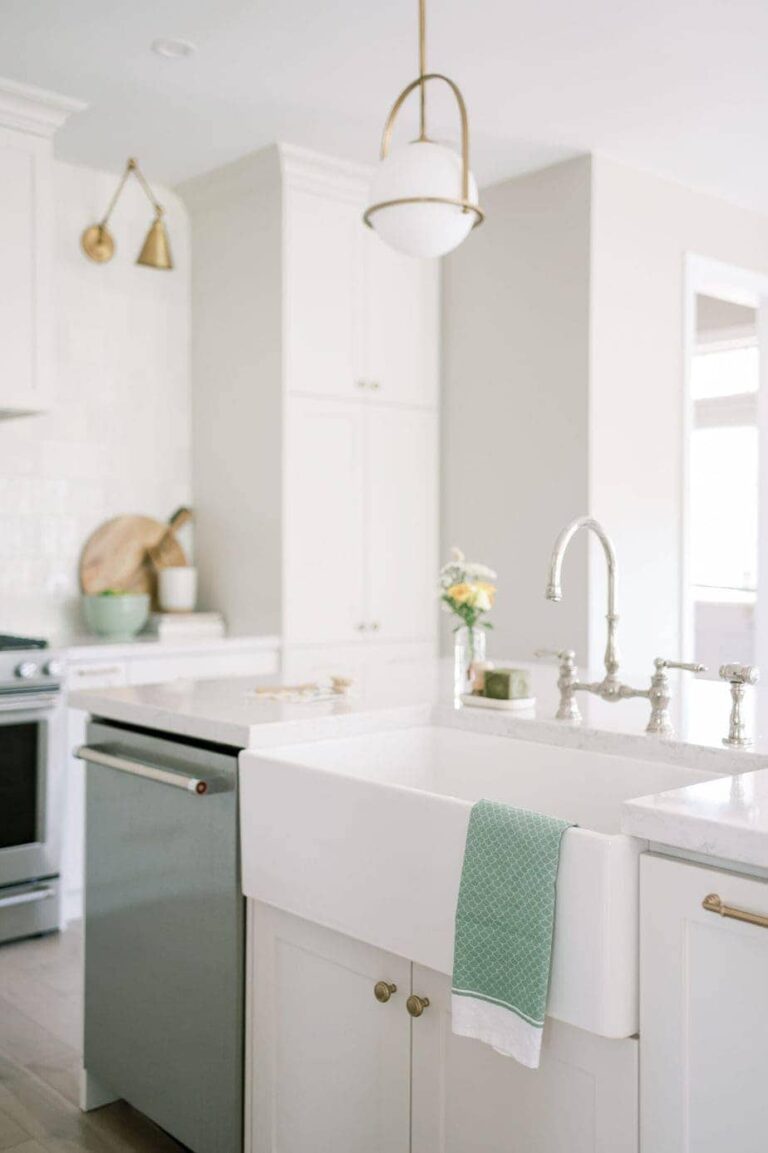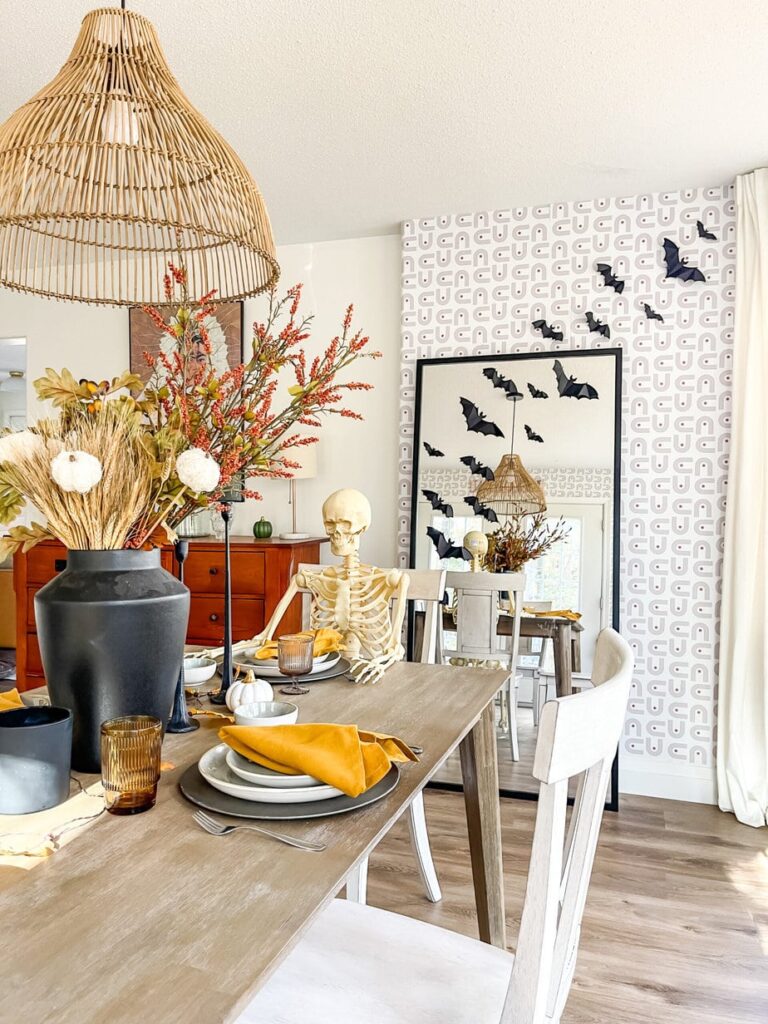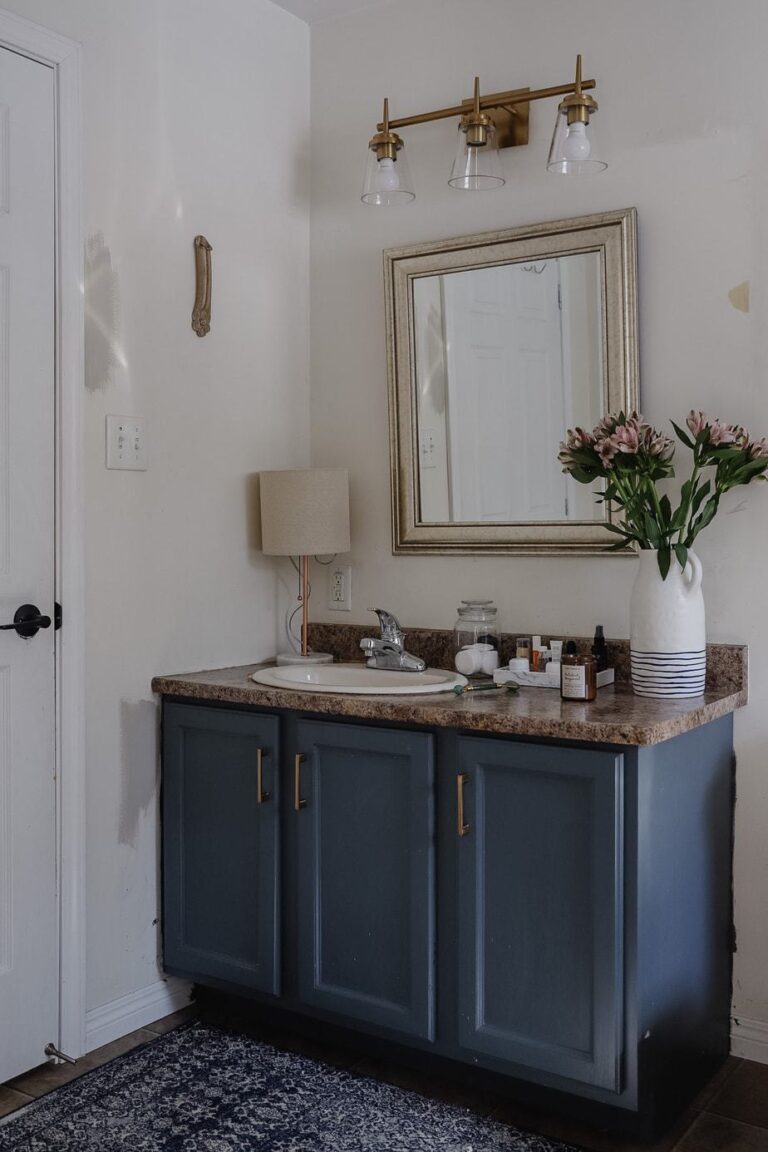Minimalist Home Design: Ideas for Small Space Living
Post Summary: Today we’re chatting all about minimalist small house living, design, and how to create a minimalist home that works for you.
In recent years, the minimalist small house trend has gained significant popularity among homeowners seeking to downsize and simplify their lives. These homes are designed to maximize functionality and efficiency while minimizing unnecessary space and clutter. With a focus on clean lines, natural materials, and a neutral color palette, minimalist small houses offer a peaceful and calming environment that promotes mindfulness and relaxation.
One of the main benefits of minimalist small houses is their affordability. By reducing the amount of space and materials needed for construction, these homes can be built at a fraction of the cost of traditional homes. They are often designed to be energy-efficient, which can lead to significant savings on utility bills over time.
Which is something we’re currently interested in as we help design my sister’s tiny home on a budget.
Despite their small size, minimalist small houses can offer all the necessary amenities for comfortable living. From clever storage solutions to multi-functional furniture, every inch of space is carefully considered and utilized. Whether you are looking to simplify your life, reduce your environmental footprint, or just enjoy a cozy and comfortable living space, a minimalist small house may be the perfect solution for you.
Keep reading to learn about minimalist small house living and design.
Design Principles of Minimalist Small Houses
When I was in school for Interior Design, my favorite topic was minimalism. I was obsessed with minimalist small houses. After researching a ton over the years I’ve found the following design principles are crucial to achieving that clean and functional space that I love so much.
Embracing Clean Lines and Open Spaces
One of the key aspects of minimalist house designs is the emphasis on clean lines and open spaces (which is something you’ll hear a lot in this article). By removing unnecessary clutter and simplifying the design, the space feels more spacious and calming. To achieve this, I often incorporate built-in storage solutions and furniture that serve multiple purposes, such as a bed with built-in drawers.
Incorporating Natural Light and White Walls
Another important aspect of minimalist small houses is the use of natural light and white walls. This creates a bright and airy atmosphere that feels refreshing and energizing. We usually see designers incorporate large windows and skylights to maximize the amount of natural light that enters the space. Paired with white walls to help reflect light and create the illusion of a larger space.
Overall, the design principles of minimalist small houses are centered around simplicity, functionality, and a focus on the essentials. By embracing clean lines, open spaces, natural light, and white walls, a minimalist small house can feel spacious, calming, and refreshing.
CLUTTER-FREE LIVING
How to Start Decluttering
Ready to get rid of all the clutter and adopt a more minimalistic home? This is exactly how to start decluttering, even if you feel overwhelmed.
Maximizing Small Spaces
Since we’re really diving deep into the world of minimalist small house design, I figured we had to include a thing or two about making the most of limited space. Here are some tips on how to maximize small spaces:
Strategic Use of Furniture
When it comes to furnishing a small space, it’s important to be strategic. Every piece of furniture should serve a purpose and be functional. Multi-functional furniture is especially helpful in small spaces. For example, a sofa bed or a coffee table with hidden storage can be used for seating or storage when needed.
Another important thing to consider is the scale of the furniture. In a small space, large furniture can make the room feel cramped. Opt for smaller pieces that fit the scale of the room. If you’re unsure, measure the space and furniture before purchasing to ensure a good fit.
Creating Functional Living Spaces
We all know that in a small house, every inch counts. So it’s important to create functional living spaces that serve multiple purposes. For example, a dining table can double as a workspace, and a sofa can be used for lounging and watching TV.
One way to create functional living spaces is to use room dividers. A bookshelf or a curtain can be used to separate the living room from the bedroom, creating the illusion of separate rooms. Another way to create functional living spaces is to use rugs to define different areas within a room.
By being strategic with furniture and creating functional living spaces, you can make a small space feel larger and more livable.
Interior Design Elements
Minimalist Decor and Color Schemes
I believe that minimalist decor and color schemes are essential elements in any small space design. The use of a monochromatic color palette, such as shades of white, gray, and black, creates a clean and sophisticated look. This color scheme also helps to create a sense of calm and tranquility, which is important in a small living space.
Another important design tip to keep in mind is that negative space is equally as important for minimalist decor. By keeping surfaces clear and clutter-free, the space feels open and uncluttered. This can be achieved by using innovative storage solutions, which I will discuss in the next section.

Innovative Storage Solutions
Small space storage can be a challenge. However, there are many innovative storage solutions that can help maximize space and keep the interior design clean and uncluttered. For example, built-in shelving can be used to store books and decorative items, while also serving as a design feature.
Another smart storage solution is to use furniture that doubles as storage. For example, a bed with built-in drawers can provide ample storage for clothing and linens. Hanging storage solutions are also amazing, such as hooks or a hanging shoe rack, which can help keep items off the floor and out of the way.
Overall, incorporating minimalist decor and innovative storage solutions into a small house design can create a functional and stylish living space. By using a monochromatic color palette, negative space, and creative storage solutions, the interior design can feel open, uncluttered, and inviting.
Architectural Features
As a minimalist small house enthusiast I am, I find that the architectural features of these homes are what make them truly unique. In this section, I will explore some of the most notable features of minimalist small house architecture.
Open Floor Plans and High Ceilings
One of the most striking features of minimalist small house architecture is the use of open floor plans and high ceilings. These design elements create a sense of spaciousness and airiness, making even the smallest of homes feel much larger. By eliminating walls and partitions, the space is allowed to flow freely, creating a feeling of continuity and harmony.

High ceilings also play an important role in minimalist small house architecture. They create a sense of verticality, drawing the eye upward and making the space feel larger and more expansive. This effect is often enhanced by the use of natural light, which floods the space and creates a sense of openness and connection to the outdoors.
Indoor-Outdoor Connectivity
Another important feature of minimalist small house architecture is the emphasis on indoor-outdoor connectivity. This is achieved through the use of large windows, sliding glass doors, and other design elements that blur the line between the interior and exterior spaces.
By bringing the outdoors in, these homes create a sense of connection to nature that is often lacking in more traditional homes. This connection is further enhanced by the use of natural materials, such as wood and stone, which create a sense of warmth and earthiness that is both comforting and inviting.
The architectural features of minimalist small house design are what make these homes truly special. By embracing open floor plans, high ceilings, and indoor-outdoor connectivity, these homes create a sense of spaciousness, harmony, and connection to nature that is both beautiful and practical.
Furnishings and Accessories
Selecting Essential Pieces
When it comes to furnishing a minimalist small house, selecting essential pieces is crucial. I recommend starting with a few key items that serve multiple functions. For example, a dining table that can also be used as a workspace or a coffee table with hidden storage.
When choosing furniture, focus on quality over quantity. Invest in pieces that are well-made and durable, rather than buying cheap items that will need to be replaced frequently.
It’s also important to consider the size and scale of each piece. In a small space, bulky furniture can quickly make the room feel cramped and cluttered. Opt for streamlined pieces that fit the scale of the room and leave plenty of open space.
Reducing Visual Clutter
One of my biggest pieces of advice, when I work with clients, is teaching them how to reduce visual clutter. It’s truly the key to creating a calming and spacious atmosphere no matter what size or style of home you have. Which is why I recommend keeping accessories to a minimum and choosing items that serve a purpose.
For example, instead of displaying a collection of knick-knacks on a shelf, opt for a few well-chosen books or a potted plant. This will create a more cohesive and intentional look.
When it comes to storage, choose pieces that can be closed off to hide clutter. For example, a side table with drawers or a storage ottoman can be used to store items out of sight.
Again, the key to reducing visual clutter is to have fewer things. Keep only what is necessary and meaningful, and let go of items that are no longer serving a purpose.
Adapting to a Minimalist Lifestyle
The Philosophy of Less is More
As someone who has embraced a minimalist lifestyle, I believe in the philosophy of less is more. This means that I strive to live with only the bare essentials and eliminate any excess or unnecessary possessions. By doing so, I have found that I have more time, space, and energy to focus on the things that truly matter in life.
Living with less also means embracing empty space. I have learned to appreciate the beauty of a clean, uncluttered home with plenty of open space. This not only makes my home feel more spacious but also helps me to feel more relaxed and calm.
Maintaining a Minimalist Home
Maintaining a minimalist home takes effort, but it is well worth it. One of the keys to success is to develop a personal style that fits with the minimalist aesthetic. For me, this means choosing simple, high-quality pieces that serve a specific purpose and bring me joy.
Another important aspect of maintaining a minimalist home is regularly decluttering and organizing. I make it a point to regularly go through my possessions and get rid of anything that no longer serves a purpose or brings me joy. This not only keeps my home tidy but also helps me to stay focused on what truly matters in life.
Which is why, adapting to a minimalist lifestyle requires a shift in mindset and a commitment to living with less. By embracing the philosophy of less is more and maintaining a minimalist home, I have found that I am able to live a more intentional and fulfilling life.
Case Studies and Inspirations
I have come across several case studies and inspirations that have helped me understand and appreciate the beauty of minimalist small houses over the years. Which I will share some of the most iconic minimalist home examples and the influence of minimalist pioneers.
Iconic Minimalist Home Examples
When it comes to the best minimalist homes, there are a few that stand out as great examples of modern minimalism. One of my favorites is the Glass House by Philip Johnson. This house, built in 1949, is a great example of how minimalism can be achieved through simplicity and the use of glass. The house is a single room with no interior walls, and the only partition is a bathroom. The exterior walls are made entirely of glass, allowing the natural surroundings to become a part of the interior.
Another great example of a minimalist small house is the Tiny House Movement. These homes are typically less than 400 square feet and are designed to be simple, efficient, and affordable. They often feature multi-functional furniture and appliances and use space-saving techniques to maximize living space.
Influence of Minimalist Pioneers
Donald Judd is one of the minimalist pioneers who has had a significant influence on the minimalist movement. He was an artist and designer who believed that minimalism should be more than just a style, but a way of life. His designs were simple, functional, and focused on the essentials.
Judd’s influence can be seen in the work of many modern architects and designers who continue to embrace minimalism. His legacy has also inspired a new generation of designers who are creating minimalist small houses that are both beautiful and functional.
So the minimalist movement has come a long way since its inception, and it continues to evolve. By studying the best minimalist homes, tiny homes, and the influence of minimalist pioneers like Donald Judd, and Ludwig Mies van der Rohe we can gain a deeper understanding of the principles of modern minimalism and how to apply them to our own lives.







